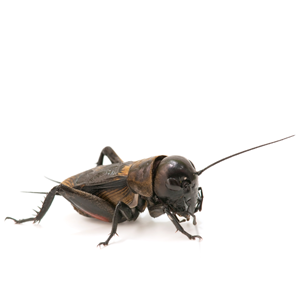Cookeville: 931-372-7676 Crossville: 931-484-0085 Sparta: 931-836-1131
| |
 Coccinellids are small insects, ranging from 1 mm to 10 mm (0.04 to 0.4 inches), and are commonly yellow, orange, or scarlet with small black spots on their wing covers, with black legs, head and antennae. A very large number of coccinellid species are mostly, or entirely, black, grey, or brown and may be difficult for non-entomologists to recognize as coccinellids. Conversely, there are many small beetles that are easily mistaken for coccinellids, such as the tortoise beetles.
Coccinellids are small insects, ranging from 1 mm to 10 mm (0.04 to 0.4 inches), and are commonly yellow, orange, or scarlet with small black spots on their wing covers, with black legs, head and antennae. A very large number of coccinellid species are mostly, or entirely, black, grey, or brown and may be difficult for non-entomologists to recognize as coccinellids. Conversely, there are many small beetles that are easily mistaken for coccinellids, such as the tortoise beetles.Cricket Chirping
The sound emitted by cricket is commonly referred to as chirping; the scientific name is stridulation. Only the male crickets chirp. The sound is emitted by the stridulatory organ, a large vein running along the bottom of each wing, covered with teeth (serration) much like a comb does. The chirping sound is created by running the top of one wing along the teeth at the bottom of the other wing. As he does this, the cricket also holds the wings up and open, so that the wing membranes can act as acoustical sails. It is a popular myth that the cricket chirps by rubbing its legs together.
There are four types of cricket song: The calling song attracts females and repels other males, and is fairly loud. The courting song is used when a female cricket is near, and is a very quiet song. An aggressive song is triggered by chemoreceptors on the antennae that detect the near presence of another male cricket and a copulatory song is produced for a brief period after a successful mating.
Crickets chirp at different rates depending on their species and the temperature of their environment. Most species chirp at higher rates the higher the temperature is (approximately 62 chirps a minute in one common species; each species has its own rate). The relationship between temperature and the rate of chirping is known as Dolbears Law. Using this law it is possible to calculate the temperature in Fahrenheit by adding 40 to the number of chirps produced in 14 seconds by the snowy tree cricket common in the United States.
Crickets, like all other insects, are cold-blooded. They take on the temperature of their surroundings. Many characteristics of cold-blooded animals, like the rate at which crickets chirp, or the speed at which ants walk, follow an equation called the Arrhenius equation. This equation describes the activation energy or threshold energy required to induce a chemical reaction. For instance, crickets, like all other organisms, have many chemical reactions occurring within their bodies. As the temperature rises, it becomes easier to reach a certain activation or threshold energy, and chemical reactions, like those that occur during the muscle contractions used to produce chirping, happen more rapidly. As the temperature falls, the rate of chemical reactions inside the crickets bodies slow down, causing characteristics, such as chirping, to also slow down.
Crickets have tympanic membranes located just below the middle joint of each front leg (or knee). This enables them to hear another crickets song.
In 1975, Dr. William H. Cade discovered that the parasitic tachinid fly Ormia ochracea is attracted to the song of the male cricket, and uses it to locate the male in order to deposit her larvae on him. It was the first example of a natural enemy that locates its host or prey using the mating signal[2]. Since then, many species of crickets have been found to be carrying the same parasitic fly, or related species. In response to this selective pressure, a mutation leaving males unable to chirp was observed amongst a population of field crickets on the Hawaiian island of Kauai, giving these crickets the obvious advantage of eluding their parasitoid opponents.
| |
Crickets are omnivorous scavengers who feed on organic materials, as well as decaying plant material, fungi, and some seedling plants. Crickets eat their own dead when there are no other sources of food available, and exhibit predatorial behavior upon weakened, crippled crickets.
Crickets have relatively powerful jaws, and have been known to bite humans, mostly without breaking the skin. The bite can, however, be painful when inflicted on sensitive skin such as the webbing between fingers.
Crickets mate in late summer and lay their eggs in the fall. The eggs hatch in the spring and have been estimated to number as high as 200 per fertile female. Subspecies Acheta Domestica however lays eggs almost continually, with the females capable of laying at least twice a month. Female crickets have a long needlelike egg-laying organ called an ovipositor.
Crickets are popular as a live food source for carnivorous pets like frogs, lizards, tortoises, salamanders, and spiders. Feeding crickets with nutritious food in order to pass the nutrition onto animals that eat them is known as gut loading. In addition to this, the crickets are often dusted with a mineral supplement powder to ensure complete nutrition to the pet.





